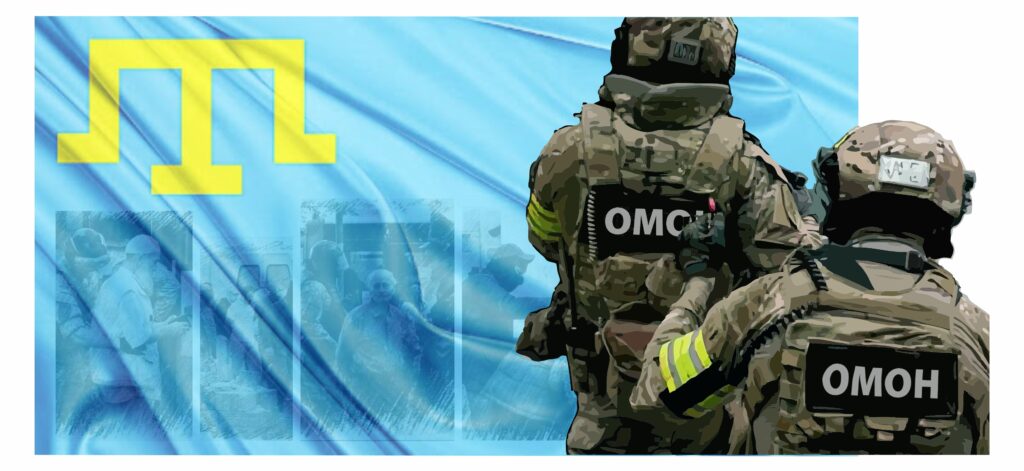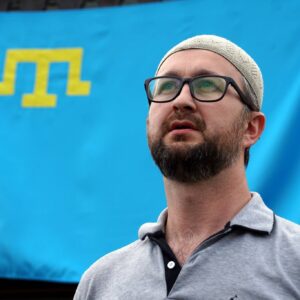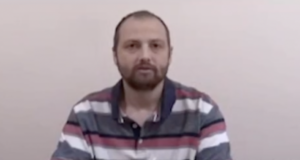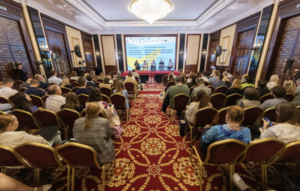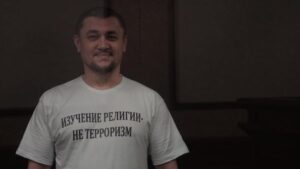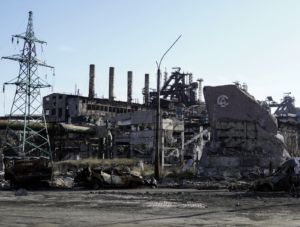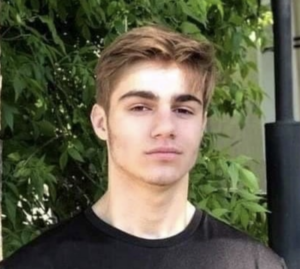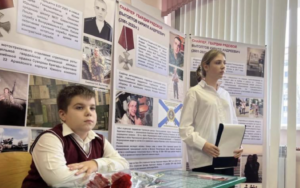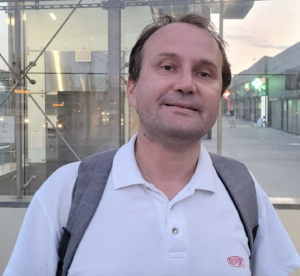 The recent mass detentions of Crimean Tatars this autumn have proven that discrimination of exercising freedom of peaceful assembly has become a well-established practice. Why this is the discrimination – the Crimean Human Rights Group is answering.
The recent mass detentions of Crimean Tatars this autumn have proven that discrimination of exercising freedom of peaceful assembly has become a well-established practice. Why this is the discrimination – the Crimean Human Rights Group is answering.
- Justifying persecution of the peaceful assembly participants by articles of RF CoAO
The Russian Federation, having occupied the Crimean peninsula, has enforced its legislation provisions, including those restricting the freedom of peaceful assembly: Code of Administrative Offences of Russian Federation, Article 20.2 (Violation of established procedure to organize or hold an assembly, rally, demonstration, march or picketing), and Article 20.2.2 (Organization of a mass simultaneous presence and (or) movement of people in the public places that have caused a public disorder).
In fact, by referring to RF CoAO Article 20.2, the occupation authorities consider any peaceful assembly that has not been approved by the administration, ‘a violation of established order’. The practice of RF CoAO Article 20.2.2 enforcement is that the fact of holding a peaceful assembly if not approved by the occupation authorities itself means ‘a public disturbance’.
In addition to these two articles, when COVID-19 pandemic started and ‘regime of emergency occurrence threat’ was introduced in Crimea in April 2020, charging the peaceful assembly participants under a new article – RF CoAO 20.6.1 (Incompliance of behavior rules in the emergence or with its occurrence threat) has started. This article was referred to due to a full ban introduced by the occupation authorities on holding any peaceful assemblies as counter-measure to coronavirus spread. The occupation authorities have been violating international standards in the freedom of peaceful assembly sphere that attach the right to hold peaceful assemblies even during the pandemics provided that such assemblies are of social significance. This norm is even applied to single-person pickets which participants observe all necessary rules of anti-epidemiologic safety.
- Enforcement of RF CoAO Articles 20.2, 20.2.2 in Crimea – statistic data
RF CoAO Articles 20.2 and 20.2.2 are applied namely to persecute the peaceful assembly participants and organizers.
The CHRG has reviewed all judgments passed in Crimea on these articles after the occupation. The review was tasked:
- To determine the number of such judgements, the result of considering and appealing them
- To identify, if possible, based on the name and surname of the persecuted whether he/she is of Crimean Tatar nationality.
The sample was made on the basis of results of searching the websites of Crimean “courts”. As a result of the search, 574 judgments on imposing the punishment or terminating the proceedings in the case under RF CoAO Art. 20.2 and 20.2.2, issued by “courts” in Crimea, on or before November 10, 2021. Among them 386 are in the cases of Crimean Tatars.
Out of 574 judgements in total:
- 465 on imposing the punishment (356 of them regarding the Crimean Tatars)
- 109 judgements on terminating the administrative proceedings (30 of them regarding the Crimean Tatars)
In addition, in 132 cases the ‘courts’ decided on returning a legal offence report to the ‘law enforcement bodies’ for amending (including 47 regarding the Crimean Tatars).
The CHRG also found 215 judgements of ‘courts of appeal´ on RF CoAO Articles 20.2 and 20.2.2, including 144 appeals filed by the Crimean Tatars. Among all these judgements:
- 9 on discontinuance of proceedings (2 of them due to claims of Crimean Tatars)
- 52 on remittitur (29 of them due to claims of Crimean Tatars)
- 154 were upheld the decisions of ‘first instance’ courts (113 of them due to claims of Crimean Tatars).
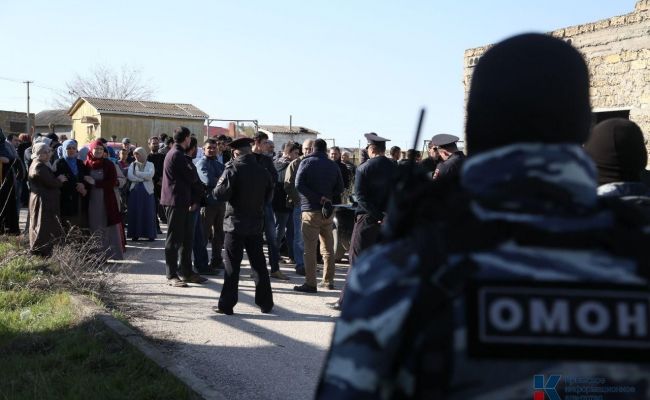
- Mass administrative persecutions in autumn of 2021
From September 1 to November 10, 2021, 5 mass detentions, with a further administrative persecution of peaceful assembly participants, were held in Crimea. So:
On September 4, at least 53 people were detained. The CHRG documented 53 reports under RF CoAO Art.20.6.1 and 2 under Article 19.3 (Disobedience to a lawful order of a policeman). “Disobedience” meant refusing to disperse immediately. Some of the people were detained near the FSB building in Simferopol, where they had come to find out the whereabouts of 5 Crimean Tatars abducted by the FSB (3 of whom were detained within the politically motivated criminal ‘Case of Nariman Dzhelial’). Other Crimean Tatars were detained not at the FSB building but in the boulevard located nearby or in the cars standing close to it[1]. In total, there were 51 Crimean Tatars among the detained.
On October 11, 20 people were detained, 7 reports were drawn up under RF CoAO Art. 20.2.2 and 13 under RF CoAO Art. 20.6.1. 15 people were detained at the building of the “Crimean Garrison Military Court”. They had come to an open court session on the “Case of Crimean Muslims.” 5 people more were detained at the building of the district police station (ROVD). They came to find out where 15 people detained earlier were. All detainees are Crimean Tatars.
On October 25, 22 people were detained, 21 reports were drawn up under RF CoAO Art. 20.2.2 and 2 reports under RF CoAO Art. 19.3 against lawyer Edem Semedliayev for refusing to comply with a demand of an Extremism Counter-Acting Center man to strip naked and stop audio recording. 21 persons were detained at the building of the “Crimean Garrison Military Court”. They had come to an open court session on the “Case of Crimean Muslims.” Lawyer Edem Semedliayev was detained in the ROVD.
On October 29, 31 people were detained. As of November 10, 2021, it is known about 5 reports under RF CoAO Article 20.2.5. The detainees took part in a rally in support of political prisoners or worked as journalists on editorial assignments. All detainees are Crimean Tatars
On November 1, 18 people were detained at the building of the “Crimean Garrison Military Court”. They had come to an open court session on the “Case of Crimean Muslims.” 16 reports were drawn up under RF CoAO Art. 20.6.1. All detainees are Crimean Tatars.
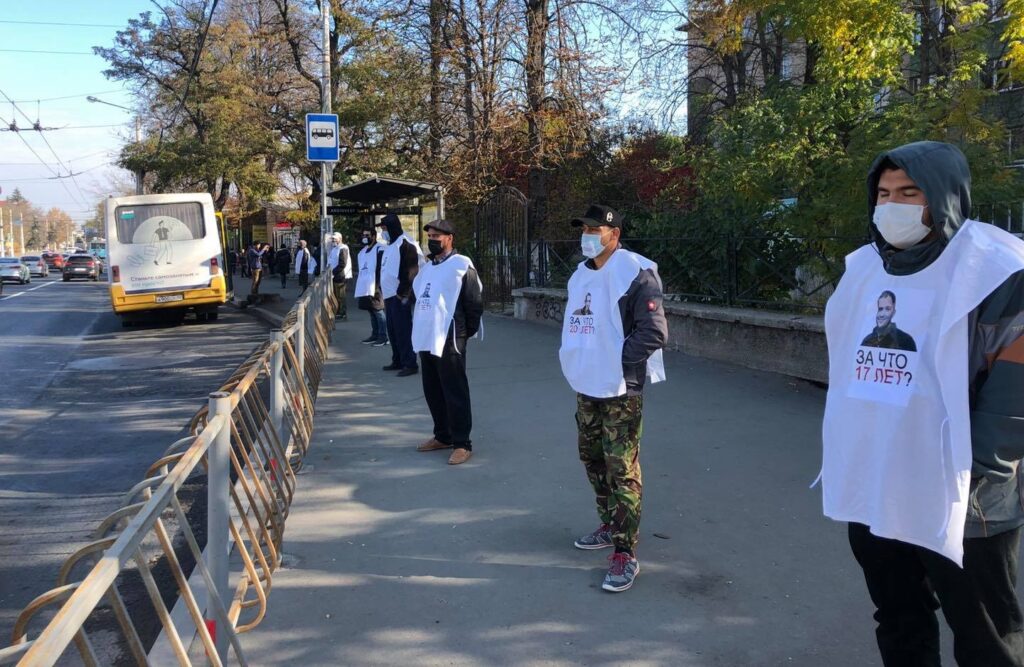
Thus, for the period from September 4 to November 1, 2021, at least 154 detentions occurred. Only two persons out of all those detained were not Crimean Tatars. In addition, some of the detainees were not participants in peaceful assemblies but were journalists or simply were passing by the place of the assembly. For instance, Enver Alimov, who was detained on September 4, passed by. One of the detainees on September 4 told the CHRG that people on the boulevard had been detained on the principle of “Crimean Tatar appearance.” The CHRG has an audio recording of his testimony. All the administrative proceedings on September 4 detentions include testimonies of the same three witnesses who were describing the assembly participants as persons of ‘Asian’, Oriental’ or ‘Tatar’ looks.
Photos and videos from the place of detention (on October 11) demonstrate that the detainees were observing a 1.5m distance and all were wearing masks. Thus, the declared reason for detention – ‘violation of rules of conduct under the regime of emergency threat’ – is not justified.
The following fact is clear evidence that administrative detentions in the autumn of 2021 are selective and discriminatory. On October 29, the Sevastopol City Committee of the Communist Party of the Russian Federation held a flower-laying ceremony in honor of the 103rd anniversary of the Komsomol (Young Communist League’. At least 10 people on the photos were close to each other without any individual protective masks[2]. On November 7, they held a more massed rally in honor of the 104th anniversary of the Bolshevik coup. The photographs show about 80 people, with only 6 wearing protective masks[3].
- Review of judgements under RF CoAO Articles 20.2 and 20.2.2.
4.1. Total number of administrative proceedings sent to the ‘courts’
Out of 574 judgements under RF CoAO Art. 20.2 and 20.2.2 386 were issued against the Crimean Tatars, that is, 67.3% of the total number of judgements. This being said, it should be remembered, that the Crimean Tatars, according to the results of the 2001 All-Ukrainian Population Census, accounted for about 12% of the population[4]. The occupation authorities stated that in 2014, about 11% of Crimean residents were Crimean Tatars[5]. However, more than half of the judgements under RF CoAO Art. 20.2 and 20.2.2 were passed regarding the Crimean Tatars. This disproportion is associated either with the fact that representatives of the Crimean Tatar people are more active in holding rallies, or they are more often persecuted for exercising their right to freedom of peaceful assembly.
It is important to note that after the occupation, the occupation authorities of the Russian Federation constantly hold parades, exhibitions of military equipment, solemn events dedicated to the war or the Russian armed forces in Crimea. These events take place even during the coronavirus pandemic, although they have no social significance, being militaristic propaganda events. Every year on May 9, the occupation authorities hold numerous events dedicated to the anniversary of the Soviet Union’s victory in World War II. For example, in 2021, the “head” of Crimea, Sergei Aksionov, issued a decree allowing a parade to be held during the pandemic[6]. However, the Crimean Tatars are detained almost every year on May 18 for participating in events dedicated to the anniversary of the Crimean Tatar people deportation.

The review of judgements showed that 30 proceedings against the Crimean Tatars were sent to the ‘Crimean’ courts for participation in the actions dedicated to the Day of Remembrance of the Victims of the Deportation of the Crimean Tatar People. In 27 of them, the judgement on punishment was passed, and only in 3 – the proceedings were terminated.
You may find an example above how on October 29, 2021, a communist rally took place in Sevastopol without any restrictions. At the same time, on the same day, 31 Crimean Tartars were detained in Simferopol.
It should be also taken into account that most of 386 proceedings regarding Crimean Tatars were started for peaceful assemblies, i.e.:
179 – for participating in mass assemblies on May 3, 2014 with a demand to end the persecution against the leader of the Crimean Tatar people, Mustafa Dzhemilev. (169 judgements on punishments and 10 proceedings terminated). All detainees were Crimean Tatars.
82 – for participating in single pickets on October 14, 2017. 81 judgements on imposing the punishment and 1 – on terminating the proceedings (after appeal). The decision to terminate the proceedings was made in the case of the only detainee who was not a Crimean Tatar.
34 – for participating in spontaneous gatherings after the mass arrests of Crimean Tatars. All 34 judgements on punishment were issued regarding the Crimean Tatars.
30 -for participating in events dedicated to the anniversary of deportation. 27 judgements on punishments, and 3 proceedings were terminated. All judgements were passed regarding the Crimean Tatars.
As of November 10, there is information about 23 court judgements made on the proceedings under RF CoAO Art. 20.2 and 20.2.2, that were opened against the massively detained Crimean Tatars in the autumn of 2021. (16 judgements on punishment and 7 proceedings were terminated).

We would remind that these figures do not include participants in peaceful assemblies who were also detained under another article – RF CoAO 20.6.1 (Failure to comply with the rules of conduct in an emergency or the threat of its occurrence).
These facts indicate that the disproportionately large number of administrative proceedings against the Crimean Tatars is associated specifically with the reaction of the occupation authorities to their peaceful campaigns, and not with the number itself. Thus, this confirms the selective approach to the persecution of participants in peaceful campaigns, that explains why the Crimean Tatars are those who are most often persecuted.
4.2. Practice of considering the cases under RF CoAO 20.2 and 20.2.2. in ‘the courts’
To assess the impartiality of the “judges”, it is important to take into account the proportion between the number of cases sent to the “courts” regarding to the Crimean Tatars and the number of all other cases. As already mentioned, out of 574 cases, 386, or 67.25%, are against the Crimean Tatars. Does the proportion remain the same when the cases are being considered in the ‘courts’? Can the Crimean Tatars count on a fair trial when these cases are being considered?
4.2.1. Passing judgements in the first instance ‘courts’
Of 465 judgements on imposing sentences, 356 (76.55%) were passed against Crimean Tatars. Regarding this, the increased number of judgements on imposing the punishment regarding the Crimean Tatars, if compared with the total number of received cases, is observed. This suggests that judgements on imposing punishments under such articles are more often passed regarding the Crimean Tatars than other ethnic groups.
At the same time, out of 109 decisions to strike out the case, only 30 (27.52%) were made regarding the Crimean Tatars. Such a small portion of the decisions suggests that “judges” are much less likely to strike out the case if a Crimean Tatar is a defendant.
These figures would become even more illustrative if the number of ‘accusive and acquittal’ judgements are compared directly. Regarding Crimean Tatars this is 356 to 30. i.e. each 13th case is stricken out. For other ethnic groups, 109 to 79, i.e. each 3rd case is stricken out.
A striking example of this approach to consider the cases in the “courts” of first instance is the administrative proceedings opened in the Kirovsky district in 2014 against 6 women from the residential building who tried to stop a car with the electric power supply distribution network repairmen, who did not want to restore the electric power supply that the building had lacked for several days. Regarding 4 women with names of “Slavic origin”, who did not deny that they had detained the car, the “judge” ruled to terminate the proceedings. However, regarding to 2 women with Crimean Tatar names, the punishment judgements were passed – a fine and compulsory work. The words of these women who told that they had not participated in these acts – one was walking with a grand-daughter in the courtyard, and the other was waiting for a taxi – were left without any care.
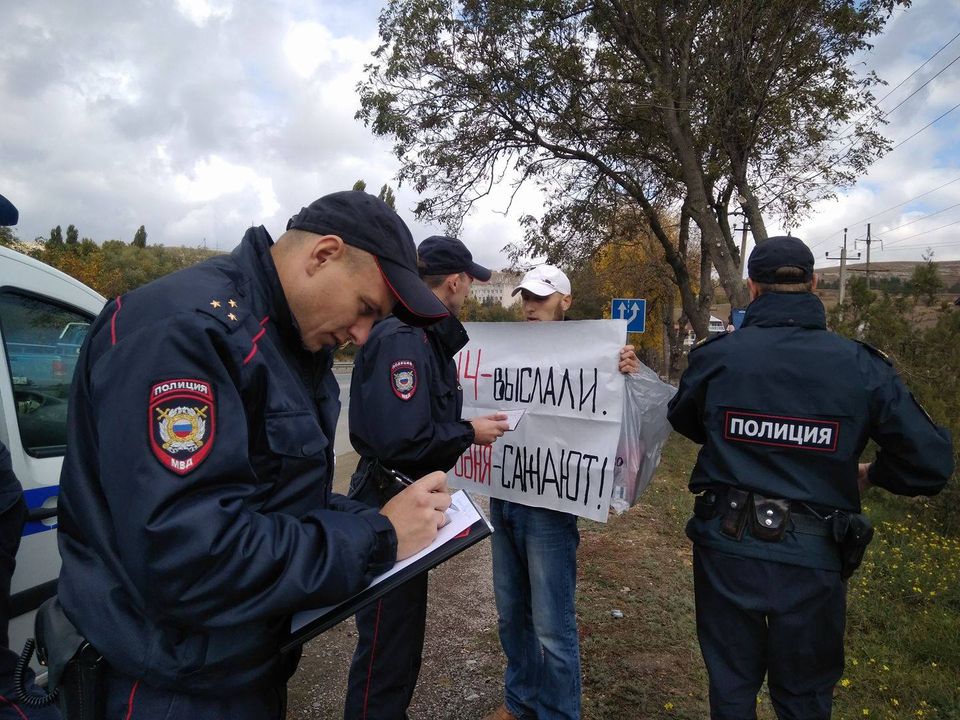
Another example is the fact that out of 82 proceedings opened for participation on October 14, 2017, in single-person pickets against political repressions in Crimea, only one case was returned after an appeal to the “court” of first instance and stricken out. This is a case against Valeriy Grigor, who was the only one non-Crimean Tatar among the detainees.
No less illustrative is the situation with returning cases to the “law enforcement” bodies to correct inaccuracies or errors. The fact of returning itself proves in most situations that the ‘judge’ is not completely ready to agree with law enforcement bodies and has reviewed more or less carefully the documents received.
Out of 132 returned cases, only 47 (35.61%) concerned the proceedings against the Crimean Tatars. Such a sharp decrease comparing to the baseline (67.25%) ratio of proceedings submitted to the “courts” indicates that the “judges” when considering cases against the Crimean Tatars consider less thoroughly the files received, and, in fact, are almost ready in advance to agree with the position of the security forces. The reviewed judgements of the “courts” on the September 4, 2021 persecutions showed absolutely clearly the superficiality and bias in considering the cases and passing the judgements on them[7].
The sample also showed that if the case was returned to the law enforcement bodies to eliminate inaccuracies, then regarding the cases of Crimean Tatars it is more likely that the re-consideration would result into a punishment judgement – 22 to 47 (correlation of punishment judgements passed during the re-consideration and the number of returned cases). For other ethnic groups, this probability is 19 to 85. This suggests that the security forces also more often re-send cases to the “courts”, and the judges are more “willing” to pass judgements on punishing the Crimean Tatars.
4.2.2. Considering the administrative cases in the ‘courts’ of appeal
The court judgements sampled by the CHRG showed that at least 215 appeals against judgements of the “courts” of first instance in administrative proceedings under RF CoAO Art. 20.2. and 20.2.2 were considered in the ‘Supreme Court of Republic of Crimea’, and the ‘City Court of Sevastopol’. Of these, 144 (66.98%) are cases of the Crimean Tatars. This ratio should be taken as a baseline when considering appeals.
In the “courts” of the appellate instance, out of 144 considerations, in 113 (78.47%) cases, the “judge” approves the judgement of the “court” of first instance. For other ethnic groups, this figure is different – 41 out of 71 or 57.75%. Thus, when considering the appeal in the case of the Crimean Tatars, the “judges” are more inclined to approve the judgement of the first instance.
The sample of judgements on striking out the cases is even more illustrative. Only 2 out of 9 such decisions were regarding the Crimean Tatars. Given that under RF CoAO Art. 20.2 and 20.2.2 66.98% of appeals are in the cases of Crimean Tatars, the ratio of 2:9 demonstrates a high level of reluctance of “judges” of the appellate instance to terminate proceedings against the Crimean Tatars.
The number of judgements on cancelling the first instance judgements and returning the cases for re-consideration to the “courts” of first instance is 52. Of these 29 (55.77%) judgements were passed in the cases of Crimean Tatars. This figure is lower than the baseline 66.98% of considering the appeals in cases of Crimean Tatars, which verifies the fact that the “judges” of appellate instance are more willing in upholding the judgements on imposing punishments regarding the Crimean Tatars than representatives of other ethnic groups.
It should be taken into account that the information on considering appeals against the punishment judgements within the ‘Case of May 3’ held in 2014 is not published at the website of the ‘Supreme Court of Republic of Crimea’. These are 167 judgements regarding the Crimean Tatars, and all appeal considerations finished with upholding the judgments of the ‘first instance courts’, with sentence provisions remained unchanged.
- Conclusions
The review of the practice to enforce RF CoAO articles 20.2 and 20.2.2 in Crimea by occupation authorities demonstrates the following:
The occupation authorities are enforcing these articles to persecute participants in the peaceful assemblies;
The discriminative practice has been introduced when representatives of the Crimean Tatar people are mostly often administratively persecuted for participation in the peaceful assemblies;
The practice of considering the cases under these articles in the Crimean ‘courts’ (both of the first instance and appellate instance) proves the prejudgement of the ‘judges’ to the Crimean Tatar nationals. Thus, the Crimean Tatars are deprived of the right to a fair trial in considering the cases under these articles;
The statistic data collected by the CHRG regarding the enforcement of these articles in opening the cases and considering them in the ‘courts’ prove a discrimination of the Crimean Tatars in exercising the right to a peaceful assembly both by the Russian enforcement bodies, and the people representing a judicial system illicitly established and subordinate to the Russian authorities.
[1] For more details of September 4 2021 persecutions, see the CHRG analytical review https://crimeahrg.org/wp-content/uploads/2021/10/4-veresnya.pdf
[4] http://2001.ukrcensus.gov.ua/rus/results/general/nationality/crimea/
[5] http://www.statdata.ru/naselenie-krima-i-sevastopolya
[6] https://rk.gov.ru/ru/document/show/28453
[7] Persecution of 4th September Simferopol Event Participants: Human Rights Review. Section 4.3.2 Adversarial principle https://crimeahrg.org/wp-content/uploads/2021/10/4-veresnya.pdf

